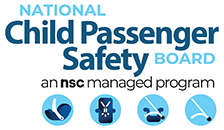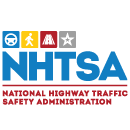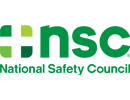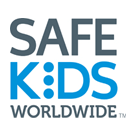35. Child/CS Location in Vehicle
Document where the CHILD and the CAR SEAT are located in the vehicle on departure. These should be the same location in the vehicle.
D represents driver location.
2nd Row: If the vehicle only has one back row (e.g. sedan), use this option and leave 3rd row blank.
4th Row: Select this option for larger vehicles with more than three rows (e.g. 15- passenger vans). Add additional location information for the 4th row to the Documentation Box on page 2.
Demonstration Only: Check if the car seat was not installed in a vehicle on departure (e.g. no vehicle present, vehicle demonstration only, portable vehicle demonstration seat). Note: Installation on a vehicle demonstration seat should only be done when no other options are available.
36. Restraint Type
Check restraint type being used on departure. Note: If the car seat is an All-in-One, choose the option that best describes how it was installed (e.g. RF Convertible, FF with Harness, Backless Booster, High Back Booster)
CS= Car Seat RF= Rear-Facing FF= Forward-Facing
RF Only without Base: Any rear-facing only car seat designed for use only by a young child in a semi-reclined rear-facing position; not permitted by manufacturer to be used forward-facing; also referred to as infant car seat; only the carrier is present.
High Back Booster: Booster seat (or combination or all-in-one car seat being used in the booster mode) with a shell that provides head, neck, and back support for the child; raises and positions the child using a lap-and-shoulder belt.
RF Only with Base: Any rear-facing only car seat designed for use only by a young child in a semi-reclined rear-facing position; not permitted by manufacturer to be used forward-facing; also referred to as infant car seat; the carrier and detachable base are present.
Backless Booster: Booster seat (or combination or all-in-one car seat being used in the booster mode) that uses the vehicle’s seat back or head restraint for head, neck, and back support for the child; raises and positions the child using a lap-and-shoulder belt; also referred to as low-back booster seat or no-back booster seat.
Base Only: Detachable base for rear-facing only car seat; the carrier is not present.
Adaptive Restraint: Car seats and booster seats obtained through a specialized provider for use with children who have adaptive transportation needs.
RF Convertible: Car seat that can be used rear-facing and forward facing. Select this option when the car seat is being used rear-facing.
Vest: A harness system used in place of a car seat or booster seat; works with either the vehicle seat belt system or LATCH.
FF with Harness: Forward-facing car seat being used with harness including convertible, combination, all-in-one, forward-facing only, and integrated car seats.
Other: Document restraint type if it does not fit any of the options above.
37. Child Secured Using
Select how the CHILD is secured on departure.
No Child Present: Select if no child is present at the car seat check.
38. CS Installed Using
Document how the CAR SEAT is installed in the vehicle on departure; select all that apply.
Document additional findings in the Documentation Box on page 2.
Uninstalled: Select if the car seat is present but not secured in a seating position (e.g. in vehicle trunk, in a box).
No CS: Check if a child left without a car seat. Proceed to #47.
39. Is this the same CS as ‘On Arrival’?
Document if the same car seat is used on arrival and departure.
Yes: If the same car seat is used on arrival and departure, skip to #45.
39a.
If no, CS provided by: Document who provided the car seat for the child on departure.
39b.
Meets Eligibility Requirements– Check box if the caregiver meets the eligibility requirements to receive the car seat provided in #39a. Document any additional local information in the Documentation Box on page 2.
40. CS MFR
Document the manufacturer name of the car seat being used on departure.
41. Model Name
Document the model name of the car seat being used on departure.
Leave this field blank if the car seat model name is not identified.
42. Model Number
Document the model number of the car seat being used on departure.
43. MFR Date (MM/DD/YYYY)
Document the date of manufacture of the car seat being used on departure.
44. Expiration Date (MM/DD/YYYY)
Document the expiration date, if available, of the car seat being used on departure.
45. CS Registered for Recalls By
Document who is responsible for registering the car seat being used on departure.
N/A: Select if no car seat is being used on departure.
46. Is the CS compatible with the vehicle?
Document if the car seat being used at departure is compatible with the vehicle. Note: If there was any incompatibility on arrival, document issues in the Documentation Box.
Yes: Proceed to #47.
Yes, with difficulty: Select if the CS position in the vehicle had to be changed due to a compatibility issue, then continue to 46a to explain the difficulty.
No, need different CS: Answer #46a.
CS uninstalled: Proceed to #47.
46a. What difficulties did you encounter?
Select all difficulties that you encountered when installing the car seat being used on departure.
Other: If a description of the difficulty is not listed, provide a brief description in the “other” box. If more detail is necessary, describe in the Documentation Box on page 2.
47. Child/CS Correct on Departure
Document if all corrections are made prior to departure. Complete this question even if there is no child present.
No: Provide an explanation as to why all corrections are not made in the Documentation Box on page 2. Only select “No” if the seat is not correct for the child or the seat is otherwise unusable (expired, damaged, or incorrect seat selection – age, height, weight).



